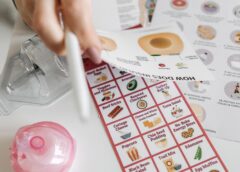Availability of Insulin Products Will Help Increase Access and Potentially Lower the Cost of Insulin for People with Diabetes
Today, the U.S. Food and Drug Administration approved the first interchangeable biosimilar insulin product, indicated to improve glycemic control in adults and pediatric patients with Type 1 diabetes mellitus and in adults with Type 2 diabetes mellitus. Semglee (insulin glargine-yfgn) is both biosimilar to, and interchangeable with (can be substituted for), its reference product Lantus (insulin glargine), a long-acting insulin analog. Semglee (insulin glargine-yfgn) is the first interchangeable biosimilar product approved in the U.S. for the treatment of diabetes. Approval of these insulin products can provide patients with additional safe, high-quality and potentially cost-effective options for treating diabetes.
“This is a momentous day for people who rely daily on insulin for treatment of diabetes, as biosimilar and interchangeable biosimilar products have the potential to greatly reduce health care costs,” said Acting FDA Commissioner Janet Woodcock, M.D. “Today’s approval of the first interchangeable biosimilar product furthers FDA’s longstanding commitment to support a competitive marketplace for biological products and ultimately empowers patients by helping to increase access to safe, effective and high-quality medications at potentially lower cost.”
Biological products include medications for treating many serious illnesses and chronic health conditions, including diabetes. A biosimilar is a biological product that is highly similar to, and has no clinically meaningful differences from, a biological product already approved by the FDA (also called the reference product). This means you can expect the same safety and effectiveness from the biosimilar as you would the reference product.
An interchangeable biosimilar product may be substituted for the reference product without the intervention of the prescriber. The substitution may occur at the pharmacy, a practice commonly called “pharmacy-level substitution”—much like how generic drugs are substituted for brand name drugs, subject to state pharmacy laws, which vary by state. Biosimilar and interchangeable biosimilar products have the potential to reduce health care costs, similar to how generic drugs have reduced costs. Biosimilars marketed in the U.S. typically have launched with initial list prices 15% to 35% lower than comparative list prices of the reference products.
More than 34 million people in the U.S. today have been diagnosed with diabetes, which is a chronic (long-lasting) health condition that affects how the body stores and uses sugars and other nutrients for energy. Most food is broken down into sugar (also called glucose) and released into the bloodstream. When blood sugar levels increase, it signals the pancreas to release insulin, which acts like a key to allow blood sugar to enter the body’s cells for use as energy. With diabetes, the body doesn’t make enough insulin to keep sugar levels regulated in the normal range.
“Access to affordable insulin is critical and long-acting insulin products, like insulin glargine, play an important role in the treatment of Types 1 and 2 diabetes mellitus,” said Peter Stein, M.D., director of the Office of New Drugs in the FDA’s Center for Drug Evaluation and Research. “The FDA’s high standards for approval mean health care professionals and patients can be confident in the safety and effectiveness of an interchangeable biosimilar product, just as they would for the reference product.”
All biological products are approved only after they meet the FDA’s rigorous approval standards. The approval of Semglee (insulin glargine-yfgn) as biosimilar to, and interchangeable with Lantus (insulin glargine), is based on evidence that showed the products are highly similar and that there are no clinically meaningful differences between Semglee (insulin glargine-yfgn) and Lantus (insulin glargine) in terms of safety, purity and potency (safety and effectiveness). It also showed that Semglee (insulin glargine-yfgn) can be expected to produce the same clinical result as Lantus (insulin glargine) in any given patient and that the risks in terms of safety or diminished efficacy of switching between Semglee (insulin glargine-yfgn) and Lantus (insulin glargine) is not greater than the risk of using Lantus (insulin glargine) without such switching.
Interchangeable Biosimilar Insulin
Semglee (insulin glargine-yfgn), offered in 10 mL vials and 3 mL prefilled pens, is administered subcutaneously once daily. Dosing of Semglee (insulin glargine-yfgn), like Lantus, should be individualized based on the patient’s needs and should not be used during episodes of hypoglycemia (low blood sugar) or in patients with hypersensitivity to insulin glargine products. Also, like Lantus, Semglee (insulin glargine-yfgn) is not recommended for treating diabetic ketoacidosis. Semglee (insulin glargine-yfgn) may cause serious side effects, including hypoglycemia (low blood sugar), severe allergic reactions, hypokalemia (low potassium in blood) and heart failure. The most common side effects associated with insulin glargine products other than hypoglycemia include edema (fluid retention), lipodystrophy (pitting at the injection site), weight gain and allergic reactions, such as injection site reactions, rash, redness, pain and severe itching.
The FDA released new materials for health care providers to enhance understanding about biosimilar and interchangeable biosimilar products, including a fact sheet about interchangeable biosimilar products.
The FDA granted approval of Semglee (insulin glargine-yfgn) to Mylan Pharmaceuticals Inc.


